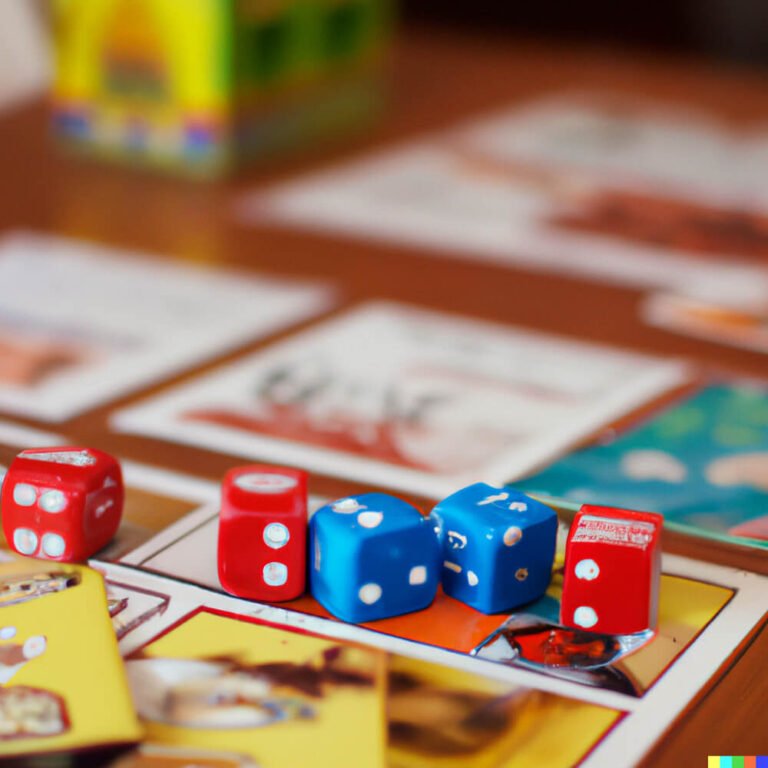Strategy board games have seen a surge in popularity in recent years, captivating players with their intellectually challenging and immersive gameplay. Among the vast selection of strategy board games available, Photosynthesis has emerged as a unique and intriguing option that combines educational elements with strategic decision-making. In this article, we will delve into the world of Photosynthesis, exploring its concept, gameplay mechanics, components, strategic depth, learning experience, and overall gameplay experience.
Board games have experienced a renaissance in the gaming industry, offering a refreshing break from digital screens and providing social interaction among players. Strategy board games, in particular, have garnered immense popularity due to their ability to stimulate critical thinking skills and foster strategic planning. Photosynthesis stands out amongst strategy board games for its innovative approach that intertwines the realm of botany with engaging gameplay mechanics.
At its core, Photosynthesis challenges players to strategically grow trees by harnessing the power of sunlight while also blocking their opponents’ access to light. With an objective rooted in the science of photosynthesis itself, this game presents a unique opportunity for players to explore and understand the fundamental processes of plant life through an entertaining medium. By carefully managing resources and implementing different strategies, players aim to maximize their tree growth while disrupting their rivals’ efforts.
The fascination surrounding Photosynthesis lies not only in its educational value but also in its visually appealing components. The game incorporates beautifully illustrated artwork that captures the essence of lush forests and natural landscapes. Each component, from the game board to tree tokens and sunlight points counters, showcases meticulous attention to detail. The overall visual appeal immerses players into a captivating environment while complementing the botanical theme of the game.
Intrigued by both its subject matter and enticing gameplay mechanics? Join us as we embark on a journey through the world of Photosynthesis – a strategy board game that is not only entertaining but also offers valuable educational insights into nature’s own process of harnessing energy: photosynthesis.
Overview of Photosynthesis
Photosynthesis is a unique and captivating strategy board game that allows players to simulate the process of photosynthesis in plants. The objective of the game is to strategically grow and position trees to absorb as much sunlight as possible, all while managing resources and blocking opponents’ sunlight access. This section will provide an overview of the concept and gameplay mechanics of Photosynthesis.
In Photosynthesis, players take on the role of rival tree species competing for sunlight in a forest ecosystem. The game revolves around the movement of light around the board in a clockwise direction, representing the passage of time. Each turn, players can plant new seeds or grow existing trees, using sunlight points earned from their fully grown trees.
Strategic tree placement is crucial in Photosynthesis. Essentially, trees must be placed at specific distances from one another to maximize their exposure to sunlight without being overshadowed by larger neighboring trees. As trees grow taller, they cast longer shadows and block sunlight access for other players’ trees. This creates a dynamic balance between growth and blocking strategies, as players compete for limited resources while simultaneously hindering opponents’ progress.
Furthermore, each tree’s growth potential depends on its location on the board. Trees closer to the edge receive less sunlight but have easier access to newly planted seeds compared to those located deeper inside the forest. This adds an extra layer of strategic decision-making for players as they weigh these factors when expanding their tree population.
Overall, understanding these core gameplay mechanics is essential in order to succeed in Photosynthesis. Players must strike a delicate balance between maximizing their own resource gains and strategically impeding their opponents’ progress without sacrificing their own growth potential. This aspect of strategic depth makes Photosynthesis an engaging and challenging game for both casual players seeking fun and excitement, as well as avid strategy gamers looking for depth and complexity in their gaming experiences.
Components and Visual Appeal
Photosynthesis is not only a captivating strategy board game with a unique concept, but it also stands out for its stunning visual appeal and attention to detail in its physical components. The game’s design immerses players in the world of plants and photosynthesis, making it a visually striking experience.
One aspect that immediately catches the eye is the artwork on the game board. The vibrant colors and intricate illustrations create a captivating backdrop for gameplay. Each section of the board represents a different stage of tree growth, from seeding to full-grown trees. This progression adds depth and visual interest to the game as players strategically place their tree tokens on the board.
Speaking of tree tokens, they are another highlight when it comes to the components of Photosynthesis. The detailed plastic trees come in different colors corresponding to each player, adding an aesthetic appeal to the game. As players grow their trees throughout gameplay, seeing the forest come to life on the board becomes visually satisfying.
In addition to the artwork and tree tokens, Photosynthesis also includes various other physical elements that enhance its visual appeal and gameplay mechanics. For example, there are small cardboard tokens representing sunlight points that players collect throughout the game. These tokens add a tactile component to reinforce strategic decision-making as players plan their moves based on sunlight availability.
Overall, Photosynthesis excels in its attention to detail and visual appeal. The artistic design creates an immersive experience that enhances gameplay and draws players into the world of photosynthesis. The high-quality components further contribute to the overall enjoyment of this strategy board game.
| Component | Description |
|---|---|
| Game Board | A visually stunning board with vibrant colors and intricate illustrations showcasing different stages of tree growth. |
| Tree Tokens | Detailed plastic trees in different colors, representing each player and adding aesthetic appeal to the game. |
| Sunlight Point Tokens | Cardboard tokens that reinforce strategic decision-making, as players collect them based on sunlight availability. |
Strategic Depth
In Photosynthesis, strategic depth is at the heart of gameplay. The game offers players a multitude of options and decisions to make, making it an engaging and thought-provoking experience. To truly excel in Photosynthesis, players must unravel the layers of strategies available to them.
One key aspect of strategic depth in Photosynthesis lies in spatial planning. Players must strategically position their trees on the board to maximize their exposure to sunlight and ultimately earn sunlight points. This requires careful consideration of the positioning of trees and the blocking of opponents’ trees from receiving sunlight. With limited space available on the board, players must think several steps ahead and anticipate how each move will impact their overall strategy.
Resource management also plays a crucial role in achieving success in Photosynthesis. Sunlight points earned throughout the game can be used to grow trees or activate special actions that provide advantages. Players must weigh the benefits and costs of each action, deciding when to invest in tree growth to reap future rewards or use those points for immediate tactical advantages. The ability to efficiently manage resources is key to staying ahead of opponents and maximizing point gain.
Timing is another critical factor for optimizing gameplay strategies in Photosynthesis. During each round, as the sun rotates around the board, certain areas may become shaded, limiting access to sunlight for some trees. Players need to time their actions carefully, taking advantage of prime positions while also considering potential future opportunities as shadows shift throughout the game. A well-timed action can greatly affect a player’s ability to earn sunlight points and achieve victory.
Overall, Photosynthesis offers a rich strategic experience that will challenge players’ decision-making abilities and tactical thinking skills. By carefully balancing spatial planning, resource management, and timing considerations, players can develop winning strategies that set them apart from their opponents. Whether you’re a seasoned strategist or new to board games, Photosynthesis provides a satisfying level of depth that keeps gameplay fresh and engaging with each playthrough.
Learning Experience
Photosynthesis is not only a fun and engaging board game, but it also provides players with a valuable learning experience. The game offers an opportunity for players to understand the concept of photosynthesis in plants and gain insights into ecosystem interactions. By exploring the mechanics of the game, players can develop a deeper appreciation for the intricate processes that occur in nature.
One of the key educational benefits of Photosynthesis is its ability to teach players about the importance of resource management. In order to succeed in the game, players must carefully allocate their sunlight points and strategically grow their trees. This mimics the real-life process by which plants convert sunlight into energy through photosynthesis.
Players must make decisions about where to plant their seeds, how much sunlight to invest in each tree, and when to harvest their trees for points. These choices require critical thinking and planning, allowing players to learn about resource allocation and decision-making skills.
Another aspect of Photosynthesis that enhances its educational value is its focus on spatial planning. The game requires players to strategically position their trees on the board in order to maximize their exposure to sunlight while also blocking their opponents’ access to light. This reflects how plants compete for resources in nature and teaches players about spatial dynamics and optimization strategies. By understanding these concepts, players can gain a deeper understanding of plant growth patterns and ecosystem interactions.
Examples of educational benefits provided by Photosynthesis
- Understanding the process of photosynthesis in plants
- Learning about resource management
- Developing spatial planning and optimization strategies
- Exploring ecosystem interactions and competition for resources
Gameplay Experience
Playing Photosynthesis provides a unique and captivating gameplay experience that combines strategy, resource management, and spatial planning. As players navigate the beautiful game board filled with vibrant trees, they are challenged to strategically position their own trees to maximize their exposure to sunlight while blocking the growth of opponents’ trees. This section will explore personal anecdotes and experiences playing Photosynthesis, highlighting memorable moments and the overall enjoyment of the game.
One of the most exciting aspects of playing Photosynthesis is the sense of anticipation that builds as you carefully plan your moves and watch your trees grow taller. There’s a satisfying feeling when you successfully position your tree in just the right spot to catch ample sunlight while strategically blocking your opponents’ access to light.
The gameplay mechanics create a dynamic and engaging experience, as each decision feels crucial and can have lasting effects on the outcome of the game.
The strategic depth of Photosynthesis becomes increasingly apparent as you delve deeper into the gameplay. Balancing your tree placement between maximizing sunlight points and obstructing other players’ trees requires careful consideration. You must also manage your resources efficiently to ensure sustained growth throughout the game. Every turn presents an opportunity for calculated moves or surprising tactical choices that can shift the momentum in unexpected ways.
Moreover, Photosynthesis offers a high level of replayability. Each game brings new challenges as you adapt your strategies based on different player interactions, varied starting positions, and evolving board conditions. Additionally, there are advanced variant rules included in the rulebook that add further complexity for more experienced players seeking an additional layer of challenge.
Whether it’s experiencing the thrill of watching your trees reach their full potential or strategizing against cunning opponents, playing Photosynthesis is a rewarding and enjoyable experience that keeps drawing players back for more. The game strikes a balance between accessible gameplay for casual gamers yet offers enough depth to satisfy seasoned strategy enthusiasts. So gather some friends or family members who appreciate a good strategy board game for an afternoon filled with engaging gameplay and exciting strategic decision-making.
Reviews and Feedback
Opinions from Board Game Enthusiasts
Photosynthesis has received widespread attention and acclaim within the board game community. Many enthusiasts have praised the unique gameplay mechanics, stunning visual design, and educational value of the game. Reviewers have highlighted its strategic depth and engaging gameplay experience as key factors that set it apart from other strategy board games.
One player commended Photosynthesis for its elegant simplicity combined with challenging decision-making. They noted that while the rules are easy to grasp, executing a successful strategy requires careful planning and foresight. Another reviewer appreciated how the game’s mechanics mirror the photosynthesis process in plants, stating that it enhanced their understanding of this vital natural phenomenon.
Positive Feedback on Components and Visual Appeal
The visual appeal of Photosynthesis has been a key aspect of its positive reception. The high-quality nature-themed artwork and attention to detail in the components have garnered widespread praise. Players have expressed admiration for the realistic tree token designs, which add an immersive element to the game. The sturdy game board is also often commended for its durability and functionality.
Reviewers have mentioned that the striking visuals not only enhance the gameplay experience but also make Photosynthesis an attractive addition to any board game collection or display. The combination of beautiful aesthetics with engaging gameplay mechanics has made Photosynthesis stand out among other strategy board games on the market.
Constructive Criticism and Areas for Improvement
While most feedback regarding Photosynthesis has been overwhelmingly positive, some players have offered constructive criticism about certain aspects of the game. One common concern is the potential for analysis paralysis due to multiple viable strategies available at any given time. While this can lead to deep strategic play, it may also slow down gameplay or overwhelm less experienced players.
Additionally, a few reviewers have pointed out that Photosynthesis may lack replayability in comparison to other strategy board games in their collection. They suggest that once players have explored the various strategies and mastered the gameplay, the novelty may wear off. However, it’s worth noting that this perception can vary depending on personal preferences and the frequency of play.
Overall, Photosynthesis has received predominantly positive reviews and feedback from board game enthusiasts. Its unique theme, gameplay mechanics, educational value, and visually stunning components make it a standout title in the strategy board game market. Whether played casually or competitively, many players find themselves captivated by Photosynthesis’ strategic depth and engaging gameplay experience.
Conclusion
In conclusion, Photosynthesis has proven to be an exceptional addition to the strategy board game market. Its unique concept and gameplay mechanics have captivated players, providing both entertainment and educational value. From its visually striking components to its strategic depth, the game offers a well-rounded experience that will satisfy both casual gamers and avid enthusiasts.
The success of Photosynthesis lies in its ability to seamlessly integrate learning with gameplay. By introducing the concept of photosynthesis and ecosystem interactions, the game not only entertains but also educates. Players are given the opportunity to explore spatial planning, resource management, and timing in a fun and engaging manner. This makes it an excellent choice for educators, parents, or anyone interested in learning more about the wonders of nature.
Furthermore, Photosynthesis offers a high level of replayability. With multiple strategies at play and different variables influencing each game session, no two games are alike. The excitement of discovering new tactics and adapting to changing circumstances ensures that players remain hooked for repeated plays.
In terms of recommendations, Photosynthesis is particularly well-suited for those who enjoy strategic challenges and appreciate stunning artwork. Fans of other popular strategy board games such as Catan or Ticket to Ride will likely find pleasure in this game as well.
Overall, Photosynthesis has firmly established itself as a standout title in the strategy board game market. With its innovative concept, captivating gameplay mechanics, educational value, and high replayability factor; it is sure to become a staple in any gamer’s collection.
Frequently Asked Questions
Is Photosynthesis board game good?
The Photosynthesis board game is widely regarded as a good game by many players. It has received positive reviews for its strategic gameplay, beautiful artwork, and unique theme centered around growing trees.
The game offers a refreshing and engaging experience that keeps players invested from start to finish. With its high-quality components and thoughtful mechanics, Photosynthesis has gained a solid reputation as a quality board game that is enjoyable for both casual gamers and more experienced players alike.
Is Photosynthesis board game hard to learn?
While the rules of the Photosynthesis board game may seem complex at first glance, it is not necessarily hard to learn. The rulebook provides clear instructions and examples that help players understand the various concepts and actions they can take throughout the game.
Although there is some depth to the strategic decision-making involved in Photosynthesis, once players grasp the core mechanics, they will find that the gameplay flows smoothly. While there might be a learning curve for those unfamiliar with modern board games, with a bit of patience and practice, most people can quickly grasp the rules and begin enjoying the game.
What age is Photosynthesis board game for?
The age range for the Photosynthesis board game is generally recommended for players aged 8 years old and up. This suggestion takes into consideration both the complexity of the gameplay and thematic elements of growing trees through photosynthesis.
Younger children may struggle with some of the strategic aspects or fully appreciate the underlying concepts behind the game mechanics. However, older kids and adults can all find enjoyment in playing Photosynthesis together due to its intricate strategy elements that require forward planning, resource management, and understanding of spatial relationships on the board.

I love playing all kinds of games – from classics like Monopoly to modern favourites like Ticket to Ride.
I created this blog as a way to share my love of board games with others, and provide information on the latest releases and news in the industry.





